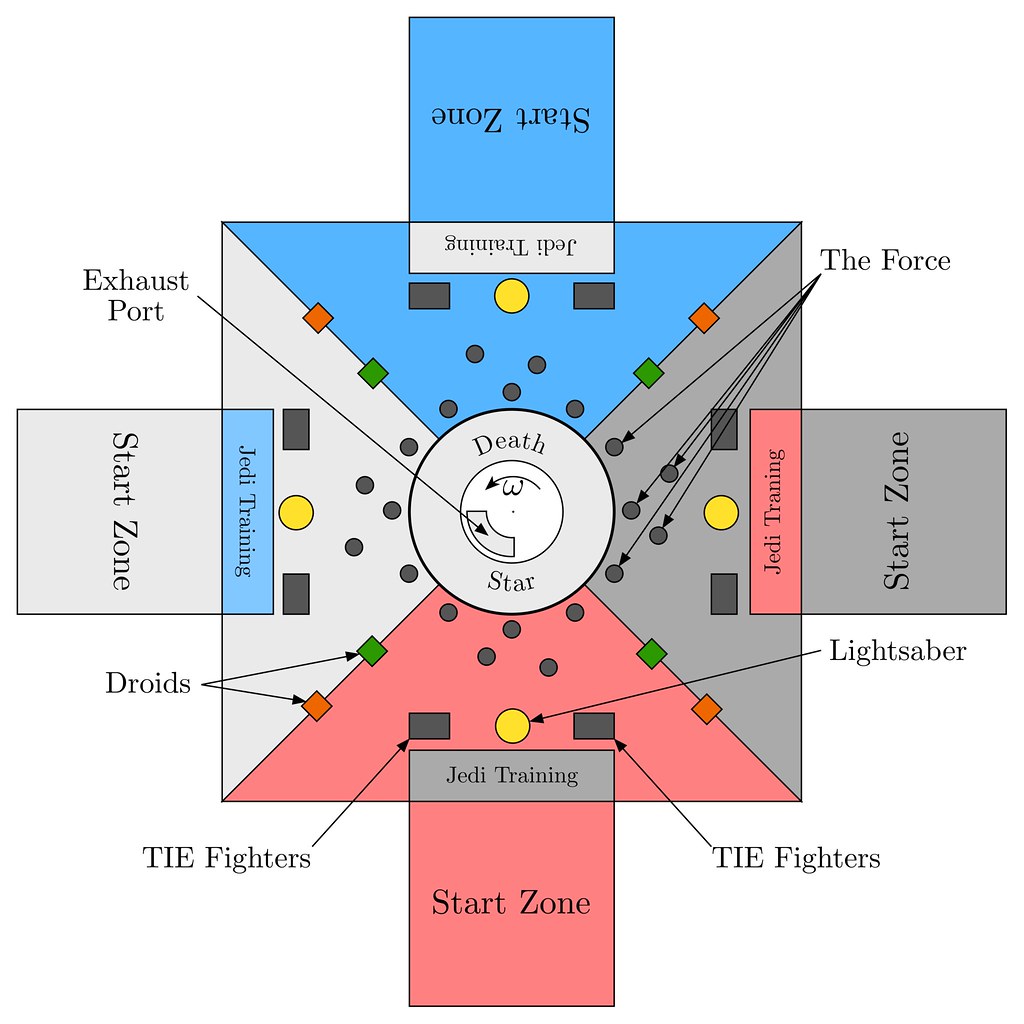Star Wars
MCHE 201 Final Project — Fall 2017
Where: Blackham Coliseum
RSVP: Dr. Joshua Vaughan
In a galaxy far, far away, Darth Sidious has successfully disbanded democracy within the Galactic Republic, consolidating his power through inciting fear and uncertainty:
In order to ensure our security and continuing stability, the Republic will be reorganized into the first Galactic Empire for a safe and secure society.
Using his public persona, Darth Sidious is named Emperor Palpatine. Palpatine and the Empire threaten peace, stability, and freedom within the galaxy. To fight for these things, a rebel force has formed, but it is vastly outnumbered and overpowered. Luckily, MCHE 201 students can help.
The Competition
On November 21st, beginning at 4:45pm, the Star Wars contest will be held in Blackham Coliseum. There will be two events. Prior to the two events, Dr. Vaughan will give a short presentation introducing the contest.
Design Review:From 5 — 6pm, a panel of judges will perform a design review of each machine. The teams must describe their machines quickly and clearly to the judges that visit, who will evaluate each team on aesthetics, ingenuity, and presentation.
Star Wars Contest:Following the design review, the student robots will compete in a head-to-head competition on the representation of the Star Wars galaxy shown in Figure 1. The robots have thirty seconds to Learn to Use the Force, Learn to Use a Lightsaber, Save Droids, Destroy TIE Fighters, Destroy the Death Star, and Safely Escape the Death Star Explosion.
Competition Details
The student robots can earn, or lose, points based on their robot's performance in each category of the Star Wars contest. The details of each is listed below.
Learn to Use the Force: In each zone, there are five Force Units (foil-wrapped table tennis balls). For each Force Unit that is collected and placed completely in the team's Jedi Training zone, the team will earn 5 points.
Learn to Use a Lightsaber: In each zone, there is a Lightsaber (toy bowling pin). For each Lightsaber collected and placed completely in the team's Jedi Training zone, the team will earn 5 points. If the Lightsaber is collected and placed completely in the team's Jedi Training zone and remains upright at the end of the round, the team will earn 10 points.
Save Droids: There are two droids (plastic toy blocks) located at the edges between the team zones. For each droid collected completely into the team's zone, the team will earn 5 points.
Destroy TIE Fighters: In each zone, there are two TIE Fighters (sponges). For each TIE Fighter that is not completely removed from the team zone, the team will be penalized 10 points.
Destroy the Death Star: Prior to the each competition round, each team will be given three Proton Torpedoes (small LED keychains). For each Proton Torpedo delivered to the Death Star, the team will earn 5 points. For each one placed into the rotating Exhaust Port, the team will earn 10 points. In order to earn the points for the Exhaust Port, the Proton Torpedo must be completely contained in the Exhaust Port, including in the vertical dimension. If an Proton Torpedo is not completely contained in the Exhaust Port, but is still within the Death Star, Death Star points will be awarded as appropriate.
Safely Escape the Death Star Explosion: Once the mission is completed, the Death Star will be set on a course to explode. To safely escape this explosion, the device must be completely outside the team's zone at the end of the round of competition. Doing so will earn 20 points.
For More Information…
For more information, see the full set of competition rules on the class website. You can also have a look at the hard work the students have put in already in the class flickr album. Pictures from past semesters are also available in a flickr collection.
A pdf of of this page is also available.
Acknowledgements
A kit of additional mechatronic components is issued to each team for use in this project. These kits were purchased via funding provided by a University of Louisiana at Lafayette Course and Curriculum Design Grant and a University of Louisiana at Lafayette STEP Award.
